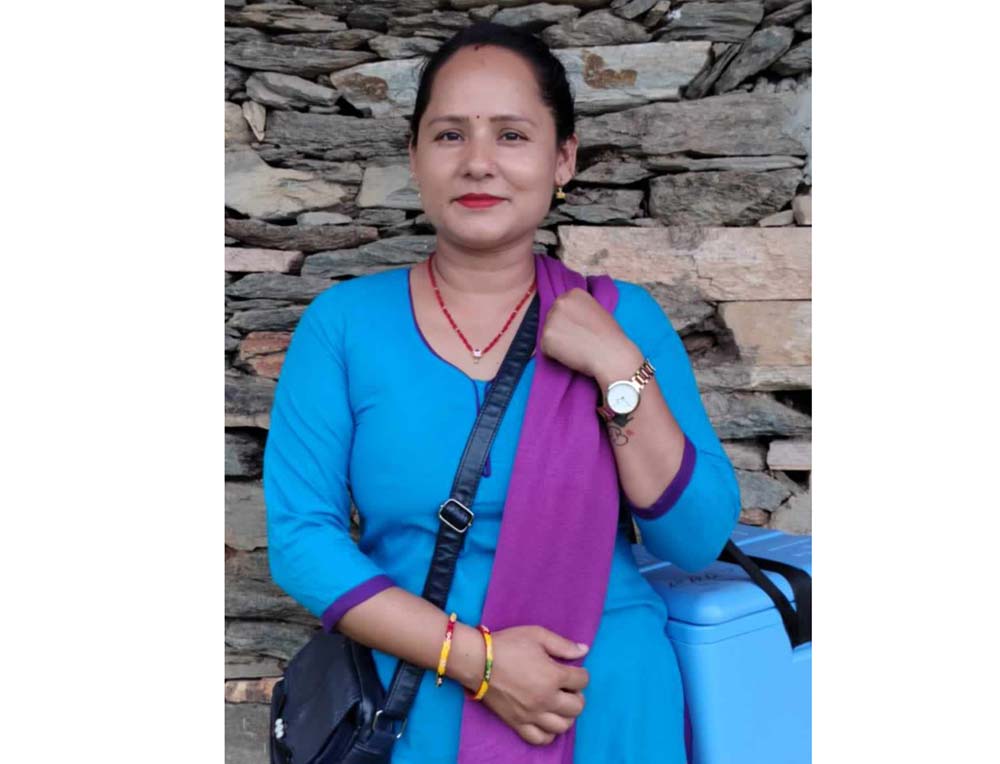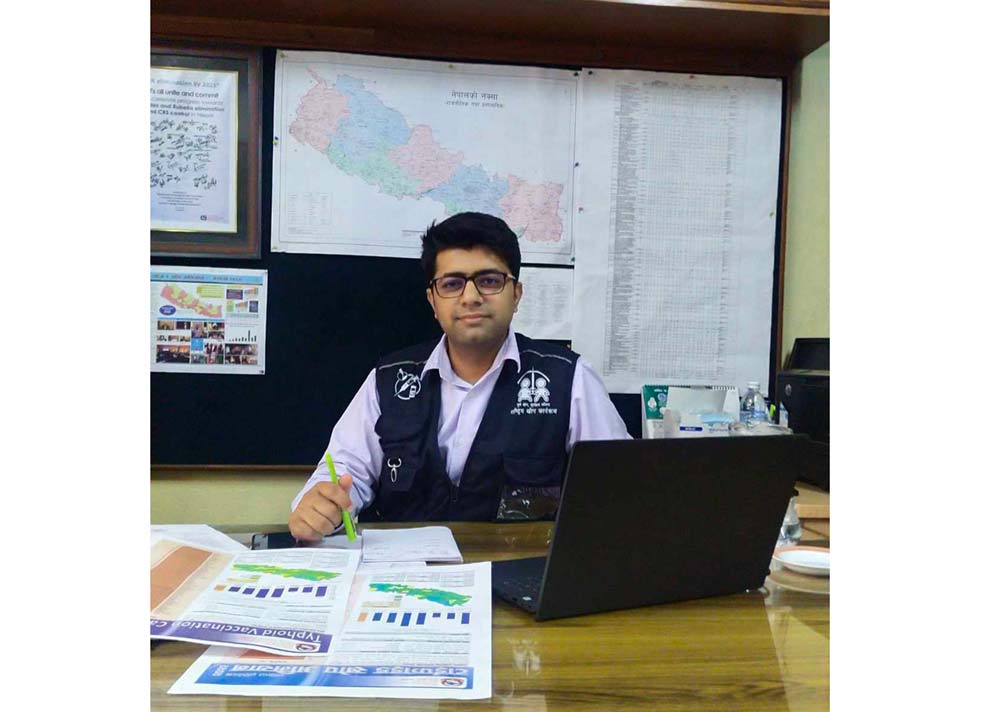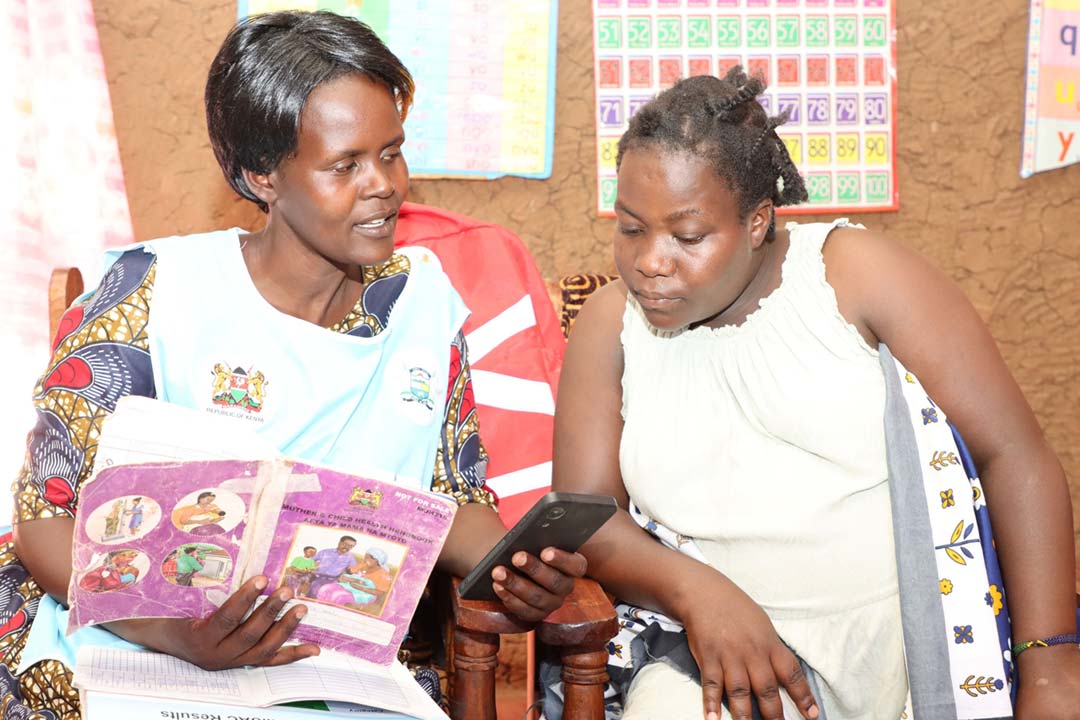How a major typhoid vaccine campaign helped Nepal find missed-out “zero-dose” kids
When health workers and monitors in Nepal got to work rolling out the typhoid conjugate vaccine (TCV) to some 7.5 million kids in 2022, they were on a dual mission.
- 27 November 2023
- 5 min read
- by Chhatra Karki

Three-year-old Salman Khan, from Helambu-4 in Nepal's Sindhupalchwok district, was completely unprotected by vaccines in April 2022 when his mother, Rabina Khatun, had an unanticipated encounter with a group of community health workers.
The female community health volunteers (FCHVs) were busy drumming up community awareness of a massive, nationwide typhoid conjugate vaccine (TCV) introduction campaign which aimed, in a little over one month, to vaccinate some 7.5 million children under the age of 15 against the life-threatening bacterial fever.
During the pandemic, the proportion of unimmunised children in Nepal grew from an estimated 1% to 4%. The wide-reaching typhoid vaccine campaign presented an opportunity to find them
But it wasn't by chance that they also probed Khatun about her son's vaccination history.
Over the course of the pandemic, the acutely vulnerable proportion of Nepali children identified in health-system parlance as "zero-dose" – technically, children who have missed even their first dose of the basic diphtheria, tetanus, and pertussis-containing vaccine (DTP), the conventional indicator for no immunisation more generally – had swelled from 1% to an estimated 4%.
More Nepali children, in other words, were vulnerable to outbreaks of preventable disease than they had been for a long time. The wide-reaching TCV campaign presented a rare chance to find them.
Searching
Pandemic setbacks aside, Nepal's immunisation system is generally strong: 90% of Nepali children are vaccinated with the third and final dose of the basic DTP vaccine.
That meant that during the TCV campaign, unimmunised children were located in trickles, not floods. In fact, in many places, the search provided reassurance, more than an opportunity to extend protection to the unprotected. Senior Auxiliary Nurse Midwife (ANM) Dipa Giri from Bhairikalika Health Post in Bhairavi Rural Municipality described undergoing special training on identifying zero-dose children before setting out on a door-to-door outreach mission. "We walked four to five hours from village to village during the TCV campaign, spreading awareness about typhoid vaccination within the community," she said.
She credits local parents for bringing in their children to the health post for vaccination as they were urged to: "No zero-dose children were identified at my health post," Giri said.

Credit : Chhatra Karki
Bhimsagar Guragai, Head of Health Office, Rasuwa, said eight zero-dose children were discovered in his area, amid a campaign he described as a success.
Ashman Tamang, a Senior Auxiliary Health Assistant (AHW), who works at Mahankal Health Post Helambu-5, said two unvaccinated kids were identified over the course of the campaign in Helambu-4: a 19-month-old, and Salman Khan.
Khan's family are migrants, lacking the advantage of stable, lifelong connections to local health structures. Khatun, the child's mother, reflected: "I am thankful to the Female Community Health Volunteers who provided information about the TCV," adding, "I make sure to take my child to the health post for the vaccinations."
New tools
Anju Basnet, a Public Health Officer from the Child Health and Immunization service, which falls under the Family Welfare Division, explained that distinctive, specially-designed TCV vaccination cards helped frontline health workers in their dual objective.
Have you read?
The cards, which recorded the TCV immunisation as standard, also featured a detachable counterfoil. During consultation with caregivers, health workers recorded any gaps in a child's vaccination history on the counterfoil. "This helped easily identify children with no doses and those who had missed some vaccinations," Basnet says, and retained that at the health facility in order to prompt follow-ups.
A new Android and iOS app-based system developed by WHO was also pressed into service during the door-to-door monitoring phase of the campaign. About 46,000 children in 75 districts were monitored via the app, which was deployed by 230 independent monitors, while "routine" monitoring was conducted by pen and paper.
Special training prepared both monitors and health workers to look out for zero-dose children during house-to-house work, explained Dr Abhishek Gautam, who is currently the head of Nepal's Child Health and Immunisation Service, and who played a key role in strategising the TCV campaign.
Finding
According to information gathered by the Gavi Zero-Dose Learning Hub (ZDLH), monitoring conducted alongside the TCV campaign turned up approximately 8,000 children who had missed some routine vaccines, with measles-rubella (MR) and Japanese encephalitis the most often missed. Among those 8,000 kids, some 200 were completely unimmunised.
“We walked four to five hours from village to village during the TCV campaign, spreading awareness about typhoid vaccination within the community.”
– Senior Auxiliary Nurse Midwife Dipa Giri, Bhairikalika Health Post
The missed-out kids tended more often to cluster in in urban slums or remote zones, and in districts that lay on the international borders to India and China.
"Whenever we find zero-dose children for any of the routine vaccines we provide them to the respective health facility to vaccinate those children, so there is also a routine activity for these children zero-doses," one key respondent told the ZDLH researchers.
7.7 million safer kids
The bulk of the TCV vaccination roll-out, meanwhile, took place in schools. Dr Gautam told VaccinesWork that the campaign achieved a remarkable national coverage of 99.7% – with average TCV coverage exceeding 95% across all seven provinces of Nepal.

Credit : Chhatra Karki
Since the introductory campaign, TCV has been administered as standard to 15-month-old children.
It's a big step forward for controlling the bacterial infection, which has had a high burden in Nepal, but as Bhimsagar Guragai of the Rasuwa Health Office pointed out, it's no silver bullet. "While I am pleased with the overall success of the TCV campaign, there is still a requirement for awareness about clean water, sanitation, and health issues in remote villages. This is crucial because the connection between sanitation and water directly impacts typhoid," he said.
More from Chhatra Karki
Recommended for you








